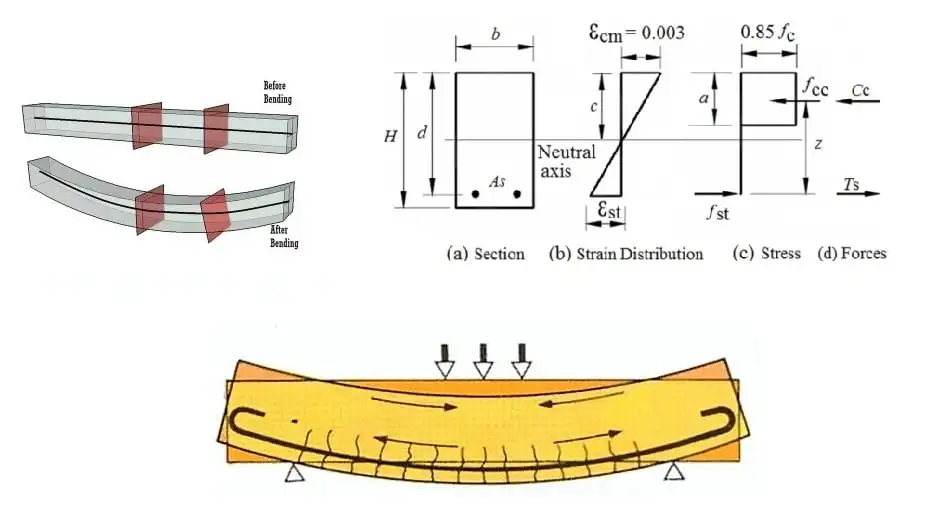Introduction
The evaluation of the following is included in the analysis of members under flexure, much like the analysis of members under axial load.
- Permitted prestress determined by permitted stresses during transfer.
- Tensions caused by service loads. These are contrasted with the permitted pressures under service circumstances.
- Superhuman fortitude. On the basis of factored loads, this is compared to the demand.
- The overall behaviour of load versus deformation. This section presents the analyses at transfer and under service loads. “Analysis of Member under Flexure,” presents the analysis for the ultimate strength individually.

Assumptions
These factors are taken into account while analysing members that are flexed.
- The Bernoulli hypothesis states that plane segments remain plane until they fail.
- For bonded tendons, there is a perfect bond between concrete and prestressing steel.
The analysis involves three principles of mechanics.
- Equilibrium of internal forces with the external loads. The compression in concrete (C) is equal to the tension in the tendon (T). The couple of C and T are equal to the moment due to external load.
- The compatibility of bonded tendons with concrete and steel strains. The first presumption that a plane section will remain plane after bending is also included in the formulation. The compatibility for unbonded tendons is in terms of deformation.
- Constitutive connections between the stresses and strains experienced by the materials Changes in Internal Forces Compression in the concrete (C) and tension in the steel (T) values in reinforced concrete members subjected to flexure rise with increasing external stress. The shift of the lever arm (z) is not significant.
Variation of Internal Forces:
When prestress is transferred in members of prestressed concrete that are subject to flexure, C is situated close to T. Only their own weight is balanced by the couple C and T. When the load is in service, C moves higher and the lever arm (z) enlarges. There isn’t much diversity in C or T. This discrepancy is schematically explained for a simply supported beam under uniform load in the following figure.
Analyses conducted under service loads and during transfer are comparable. They are therefore given collectively. When subjected to service loads, a prestressed part typically doesn’t crack. Steel and concrete are handled like elastic materials. The superposition principle is used. It is ignored that bending increases the tension in the prestressing steel.
